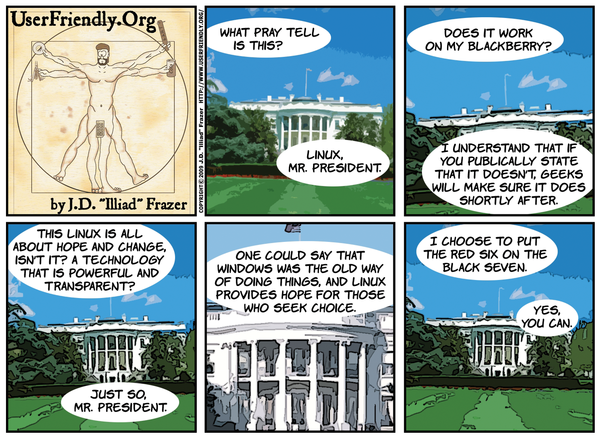Zack's Kernel News
What Is Staging?
Greg Kroah-Hartman recently offered some clarification on the nature of the "Staging Tree" because its role had changed; also, there seemed to be some confusion about it.
The staging tree, he explained, was the drivers/staging directory in the official kernel. Code submitted to that directory in the linux -next git repository would be fed directly to Linus during the merge window and would be included in the next official kernel release with little or no objection from him.
Appropriate projects for staging are drivers and filesystems that require no code changes anywhere else in the tree (i.e., they are standalone patches). The only exceptions to this are: firmware can (and should) live in the firmware directory, symbols may be exported from the main kernel code if the relevant subsystem maintainer approves, documentation may live in the Documentation directory, although that is frowned upon.
The value of putting code into staging is that it exists in the main kernel tree; therefore, it has the full universe of kernel users available to test it while presenting minimal danger to kernel stability. It answers a need that has been addressed in a variety of ways through the years: How can developers get their code tested by enough users to make it acceptable in the main tree before it actually goes into the main tree?
The restrictions placed on projects going into staging are to make sure that all code preserves kernel stability and is moving in a direct line toward migrating out of staging and into its proper location in the official source tree. Therefore, any project going into staging should be well maintained, either by the person submitting it or by a volunteer who's willing to "babysit" the code. Staging is not a place to "dump code and run away," as Greg puts it. Any code that lives in staging will taint the kernel logs when executed (i.e., it'll print a message saying it ran code from staging).
Bug reports from a tainted kernel will be less likely to find folks willing to debug them. If you're working on code in staging, this puts most of the onus on you to debug it yourself, and if you think the bug wasn't triggered by your code, you should reproduce it on an untainted kernel and submit the report. Then, you'll find plenty of willing hackers to help you.
All of this is by way of isolating staging development from the rest of kernel development. As a developer of staging code, you benefit from an audience of potentially millions of users, but the responsibility of dealing with reports from those users, as well as the behavior of your own code, lies with you.
To me, this seems like a really elegant solution to a problem that has stymied kernel developers for years; no doubt it'll be improved as time goes by.

« Previous 1 2 3 4
Buy this article as PDF
(incl. VAT)
Buy Linux Magazine
Subscribe to our Linux Newsletters
Find Linux and Open Source Jobs
Subscribe to our ADMIN Newsletters
Support Our Work
Linux Magazine content is made possible with support from readers like you. Please consider contributing when you’ve found an article to be beneficial.

News
-
Linux Servers Targeted by Akira Ransomware
A group of bad actors who have already extorted $42 million have their sights set on the Linux platform.
-
TUXEDO Computers Unveils Linux Laptop Featuring AMD Ryzen CPU
This latest release is the first laptop to include the new CPU from Ryzen and Linux preinstalled.
-
XZ Gets the All-Clear
The back door xz vulnerability has been officially reverted for Fedora 40 and versions 38 and 39 were never affected.
-
Canonical Collaborates with Qualcomm on New Venture
This new joint effort is geared toward bringing Ubuntu and Ubuntu Core to Qualcomm-powered devices.
-
Kodi 21.0 Open-Source Entertainment Hub Released
After a year of development, the award-winning Kodi cross-platform, media center software is now available with many new additions and improvements.
-
Linux Usage Increases in Two Key Areas
If market share is your thing, you'll be happy to know that Linux is on the rise in two areas that, if they keep climbing, could have serious meaning for Linux's future.
-
Vulnerability Discovered in xz Libraries
An urgent alert for Fedora 40 has been posted and users should pay attention.
-
Canonical Bumps LTS Support to 12 years
If you're worried that your Ubuntu LTS release won't be supported long enough to last, Canonical has a surprise for you in the form of 12 years of security coverage.
-
Fedora 40 Beta Released Soon
With the official release of Fedora 40 coming in April, it's almost time to download the beta and see what's new.
-
New Pentesting Distribution to Compete with Kali Linux
SnoopGod is now available for your testing needs

